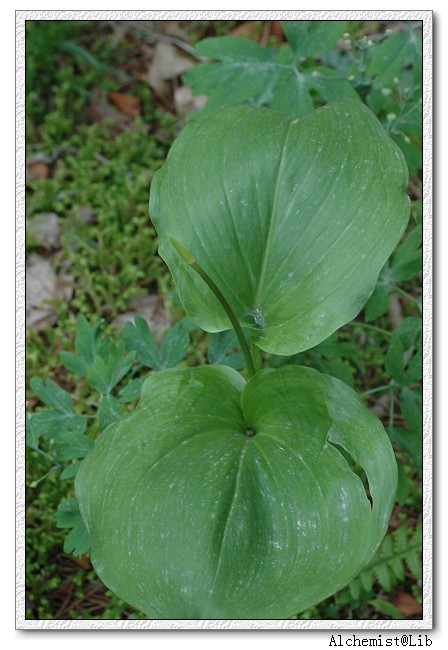
- Scientific Name: Allium victorialis L.
- Ref: Sp. Pl.:295. 1753
- Synonyms:
- Allium anguinum Bubani
- A. convallarifolium Pall. ex Ledeb.
- A. longibulbum Dulac
- A. plantaginense Willk. & Lange
- A. plantagineum Lam.
- A. reticulatum St.-Lag.
- Anguinum victorialis (L.) Fourr.
- Berenice victorialis (L.) Salisb.
- Caloscordum victorialis (L.) Banfi & Galasso
- Cepa victorialis (L.) Moench
- Geboscon lanceolatum Raf.
- G. triphylum Raf.
- English Common Name: victory onion, alpine leek, alpine broad-leaf allium
- Chinese Common Name: 茖葱/格葱 gécōng, 山葱 shāncōng, 鹿耳葱 lù’ěr∙cōng
- Family: Amaryllidaceae
- Genus: Allium
- Distribution: Forests, shady and moist slopes, pastures, streamsides; 600–2500 m. Anhui, E Gansu, Hebei, Heilongjiang, Henan, Hubei, Jilin, Liaoning, Nei Mongol, Shaanxi, Shanxi, Sichuan, Zhejiang [India, Japan, Kazakhstan, Korea, Mongolia, Russia; Europe, NW North America].
- Photo: 04/07/2007. Qingliang Peak, Zhejiang
Bulb solitary or clustered, subcylindric; tunic grayish brown to blackish brown, reticulate. Leaves 2 or 3; petiole 2--10 cm; leaf blade oblanceolate-elliptic to elliptic, 8--12 × 3--9.5 cm, base cuneate to broadly so, gradually narrowed into petiole, decurrent, apex acute or acuminate. Scape 25--80 cm, terete, covered with leaf sheaths for 1/4--1/2 its length. Spathe 2-valved, persistent. Umbel globose. Pedicels 2--4 × as long as perianth, ebracteolate. Perianth white or slightly tinged with green, very rarely tinged with red; outer segments boat-shaped, 4--5 × 1.5--2 mm, apex obtuse; inner ones elliptic-ovate, (4.5--)5--6 × 2--3 mm, apex obtuse, usually denticulate. Filaments 1.3--2 × as long as perianth segments, connate at base and adnate to perianth segments; outer ones subulate; inner ones narrowly triangular, wider, 1--1.5 mm wide at base. Ovary constricted at base into a stipe ca. 1 mm; ovules 1 per locule. Fl. and fr. Jun--Aug. 2 n = 16, 32*. (Flora of China)
